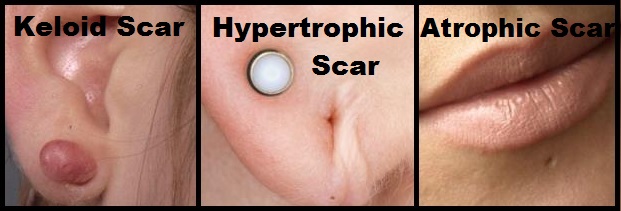By C.J. Jones
The art of tattooing has become more popular now than ever before. There seems an endless amount of possibilities that exist within the art of the tattoo realm. With the technology of tattoo removal offering options that weren’t a possibility even as little as five years ago; getting a tattoo isn’t as much a permanent risk as used to be. When it come to tattoo removal it isn’t uncommon for people to question; “Can a tattoo be completely removed?” Unfortunately, this isn’t an easy yes or no question as I will explain.
First of all, total removal of pigment from a tattoo is possible, but there are many varying factors that allow for complete pigment removal. Tattoo removal method, age of the tattoo, type of pigment used, skin type and even what artist performed the tattoo are all contributing factors as to whether pigment from a tattoo can be totally removed or not. The key word here is “pigment from a tattoo” because tattoos essentially are scars with pigment in them. Complete removal of a scar is an entirely different and complex situation all together. So, essentially, yes a tattoo can be completely removed, but often you can expect there to be some sort of damaged skin left behind. How damaged that skin will be is again, a cornucopia of factors that are also entirely individual.
So, before we get into the removal of an unwanted tattoo specifically, let’s first examine what a scar is and what type of scarring occurs to the epidermis after acquiring a tattoo. A scar is defined as “a mark left on the skin or within body tissue where a wound, burn, or sore has not healed completely and fibrous connective tissue has developed.” The most common types of scars associated with tattoos are flat scars, keloids and hypertrophic scars. Each type of scar has its own special characteristics and what type of scarring that occurs depends of a variety of factors.
Flat scars are the most common types of scars that will occur during a normal tattoo procedure. These scars can be slightly raised for almost two years before becoming smooth to the touch and some of these scars may always be slightly raised. This has a lot to do with how someone’s skin heals, but also how the tattooist performs that tattoo. Tattoos that are performed by artists who are heavy handed, often have areas that will be slightly raised, but not in very noticeable amounts. Without pigment being administered into the skin, a flat scar may often appear lighter or darker in color to the rest of the skin. A scar causes damage to skin and part of that damage is a change in pigment to the affected area. Through any tattoo removal process some part of the affected area will have contrasting pigment to the natural state of the skin surrounding it. This scar may be slightly raised or not raised at all.
Keloids are an entirely different animal from flat scars and are fairly uncommon when associated with tattooing. A Keloid is a type of scar that often occurs after a pretty severe trauma or surgery. It’s the type of scar that is defined as an overgrowth of dense fibrous tissue. In the tattooing industry there usually has to be an almost “perfect storm” of occurrences for this to be tattoo related. It usually requires someone to have dark pigmented skin and a really, really terrible kitchen wizard wielding a tattoo machine like a weapon of mass destruction. It’s an extremely rare occurrence for a professional tattooer to have a problem with a client who keloids, but it does happen. Rarely is it the fault of a good, professional tattoo artist, because there is a genetic predisposition that has to exist for this to occur.
Hypertrophic scars occur most often when a client is tattooed by a heavy handed artist or an inexperienced artist. It’s caused by excessive collagen production in the healing tissue. It doesn’t go outside the perimeter of the scar and it takes about two to five years for it to settle into the skin and become less noticeable. If you’ve ever been able to fully feel and entire outline of a tattoo, then you have run your fingers over a hypertrophic scar. Without the color of a tattoo to cover it, this scar will appear a pink to dark pink color for a number of years before turning white or lighter than its surrounding skin.
Now, how different methods of tattoo removal affect these types of scars and what does that mean for effective tattoo removal is another blog post altogether. So if you want to understand more about tattoos and their removal, check back soon for my next blog: “Is complete tattoo removal possible”?…….. Part two.


